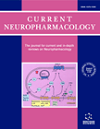
Full text loading...
We use cookies to track usage and preferences.I Understand
Germinal matrix-intraventricular hemorrhage (GM-IVH) is a detrimental neurological complication that occurs in preterm infants, especially in babies born before 32 weeks of gestation and in those with a very low birth weight. GM-IVH is defined as a rupture of the immature and fragile capillaries located in the subependymal germinal matrix zone of the preterm infant brain, and it can lead to detrimental neurological sequelae such as posthemorrhagic hydrocephalus (PHH), cerebral palsy, and other cognitive impairments. PHH following GM-IVH is difficult to treat in the clinic, and no level-one strategies have been recommended to pediatric neurosurgeons. Several cellular and molecular mechanisms of PHH following GM-IVH have been studied in animal models, but no effective pharmacological strategies have been used in the clinic. Thus, a comprehensive understanding of molecular mechanisms, potential pharmacological strategies, and surgical management of PHH is urgently needed. The present review presents a synopsis of the pathogenesis, diagnosis, and cellular and molecular mechanisms of PHH following GM-IVH and explores pharmacological strategies and surgical management.

Article metrics loading...

Full text loading...
References


Data & Media loading...

